Written by Jacob Churulo, Nachusa Grasslands Resident Fellow
Every year, Nachusa’s crew plantings embody our long-standing commitment to restoring high quality prairie habitat. In 2023, the combined seed picking efforts of the summer and fall restoration crews culminated into this 24-acre planting of mostly wet and mesic prairie. The planting site can be found just north of our Thelma Carpenter hiking trail on Carthage Rd. in what we call the Juanita and Homer Williams tract. This year’s planting—our 138th—filled in the final piece of a 350-acre block that now spans from Lowden to Carthage Rd.
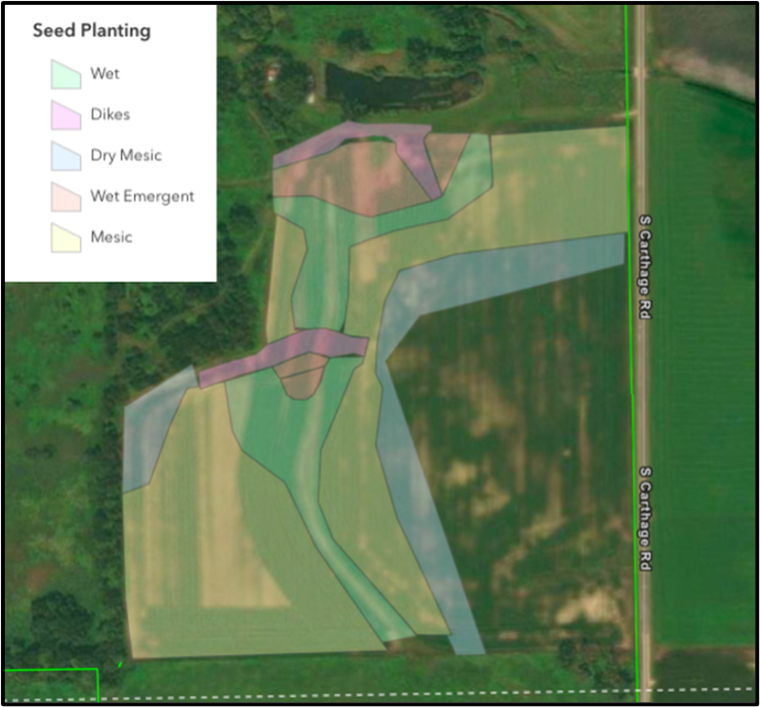
In the summer of 2023 leading up to the planting, an independent contractor was hired to prepare the site by constructing a series of dikes and scrapes which would hold water and encourage wetland conditions. We first decided that the area could host wetland habitat using the US Department of Agriculture’s web soil survey. This is a free online tool produced by the Natural Resources Conservation Service that reports the soil types and conditions within a desired area of interest. When we performed this soil survey for the planting site, we found that over half of the unit was made up of La Hogue loam soil, which is characterized by poor drainage. This information indicated where it would be most appropriate to construct the wetland scrapes. After that, we could get to removing the drainage tiles and finally start constructing the dikes and scrapes. By the first large rain after construction was complete, the site hosted two small ephemeral ponds which were already being visited by Killdeer, Pectoral Sandpipers, and Sandhill cranes! In only a summer a wetland had been created before our eyes.
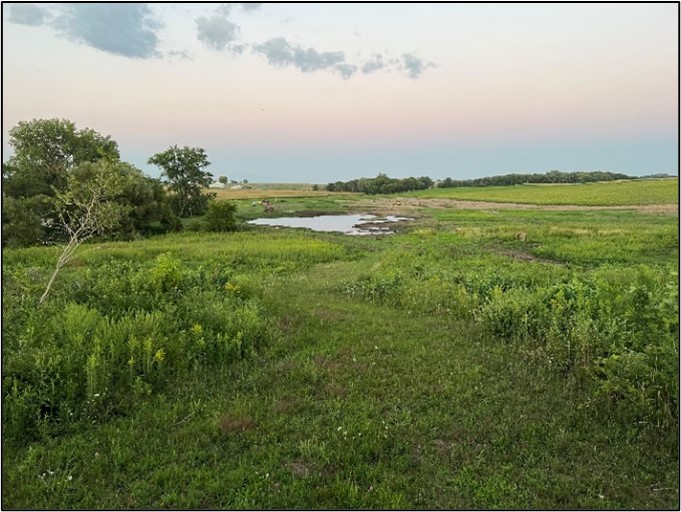
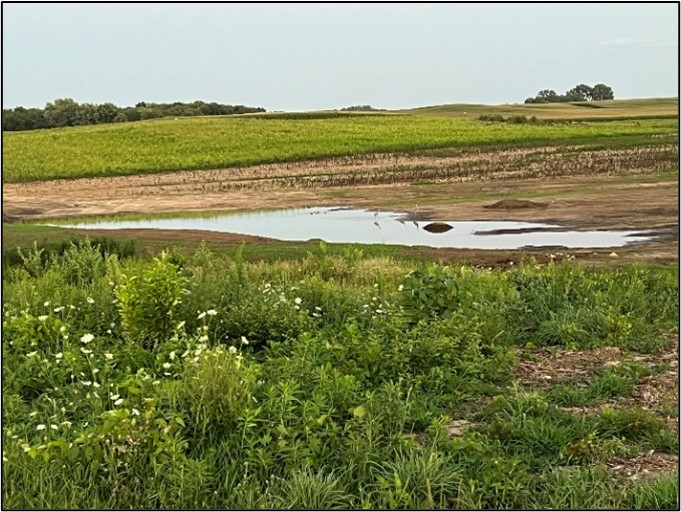
When the time came to compile all our seed collection data, we found that 2023 proved to be a productive year for seed diversity. Overall, we picked a total of 1,300 Lbs. from 247 species of plants, 19 of which had never been picked for Nachusa seed mixes before! This would not have been possible without the tremendous support from our partners, who allowed us to pick on their sites and gain access to species that do not grow at Nachusa (but hopefully they will now). Because of the wetland habitat being constructed in our planting site, the crew made an extra effort to collect seeds from wetland plants, like pickerel weed and arrowhead which tolerate and even prefer standing water. Picking these seeds made for an especially entertaining afternoon as the crew trudged through stinky wetland ponds, our muck boots utterly useless in the knee-high water. Of the 247 species picked, 68 were wetland species, many of which were also part of the 19 newly picked species.
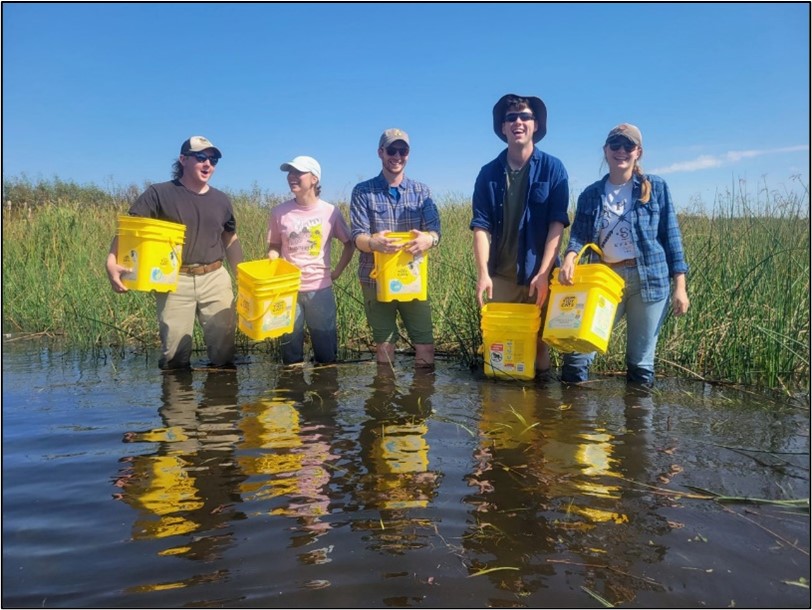
The seed mixes were prepared over the course of two days, and the planting was finished in three days. Dressed in a dust mask and goggles with pitchfork in hand, we got to work mixing 100s of Lbs. of seed at a time to create five mixes: dry, dry mesic, mesic, wet, and wet emergent. We also utilized a 2020 mix specifically made for dikes, which was a collection of different combine mixes of mostly mesic-dry mesic seed that would support the dike soil from erosion.
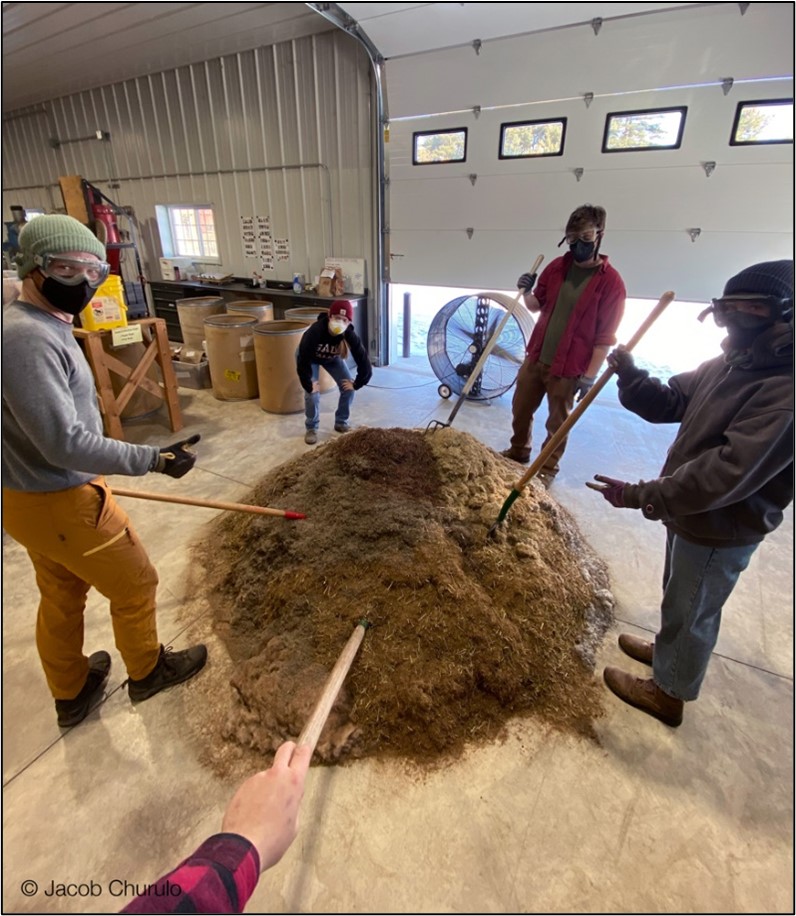
We planted the seed using drop seeders pulled by pickups. The two trucks drive next to each other, staggered so we can maintain a small overlap and prevent gaps from forming. The trucks drive back and forth in one direction and then again perpendicular to that to ensure a full coverage. On the first day of the planting, we had a lovely blanket of snow over the planting site. While this may seem like a hindrance, the snow makes it incredibly easy to see where the seed is being dropped and evaluate the consistency of the drop seeders, as well as quickly spot and fill any gaps. We planted each mix at a time, and saved the wet emergent mix for hand seeding at the end because it was too mucky to drive the seeders through. On December 11, when the dikes were finally seeded, we officially completed our 138th planting at Nachusa Grasslands!
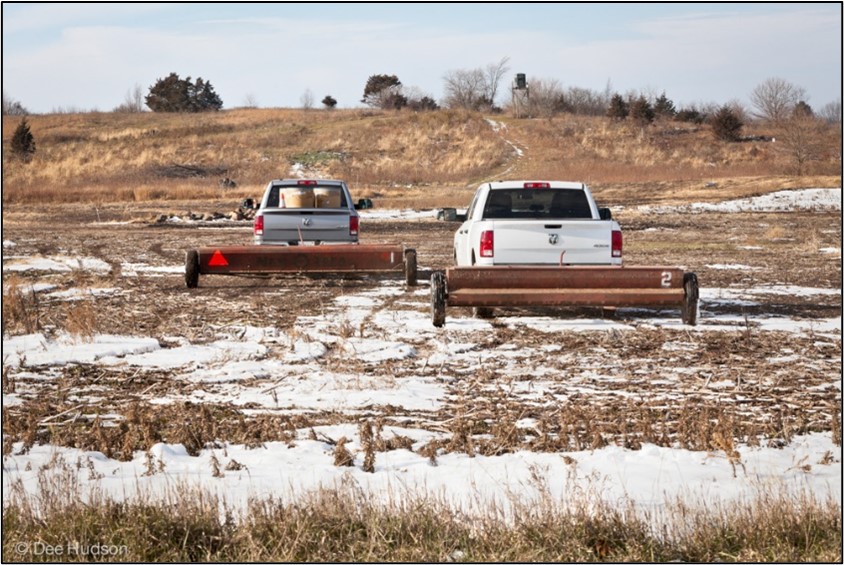
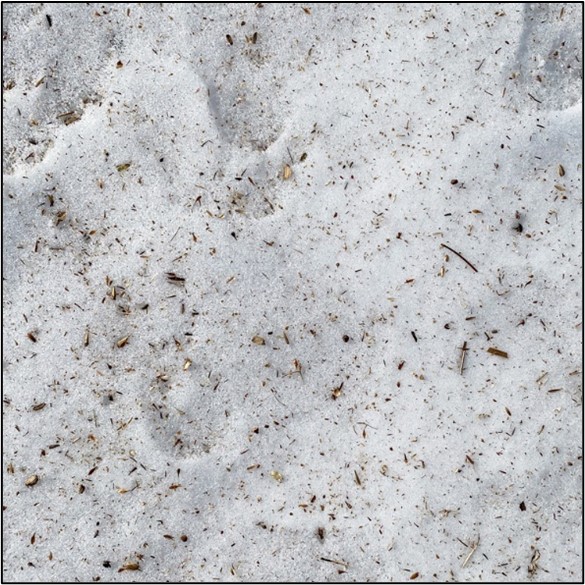
Huge thank you to the crew members, staff, and numerous volunteers who helped us collect all the seed that went into this planting, and another thanks to the staff members and contractors who prepared the site to be planted. The habitat that has been created here is a testament to how important collaboration and teamwork is, especially in restoration, and Nachusa’s dedication to restoring high quality prairie habitat for all organisms to benefit from. A full planting report, as well as previous planting histories, can be found on the Friends of Nachusa Grasslands website at the link below. Crew Planting 138 Full Report:https://www.nachusagrasslands.org/uploads/5/8/4/6/58466593/138_plantingreport_2023_juanitawilliams.pdf
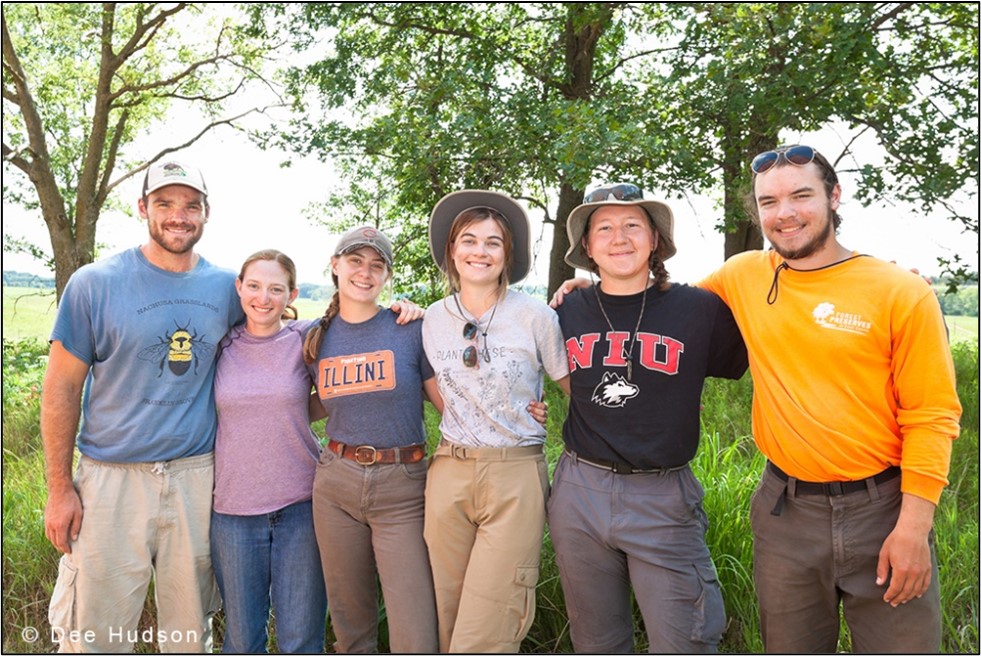
Summer crew, pictured left to right: Noah Reynolds, Amber Denker, Molly Duncan, Clara Barton, Jacob Churulo, Zach Skubiszewski.
